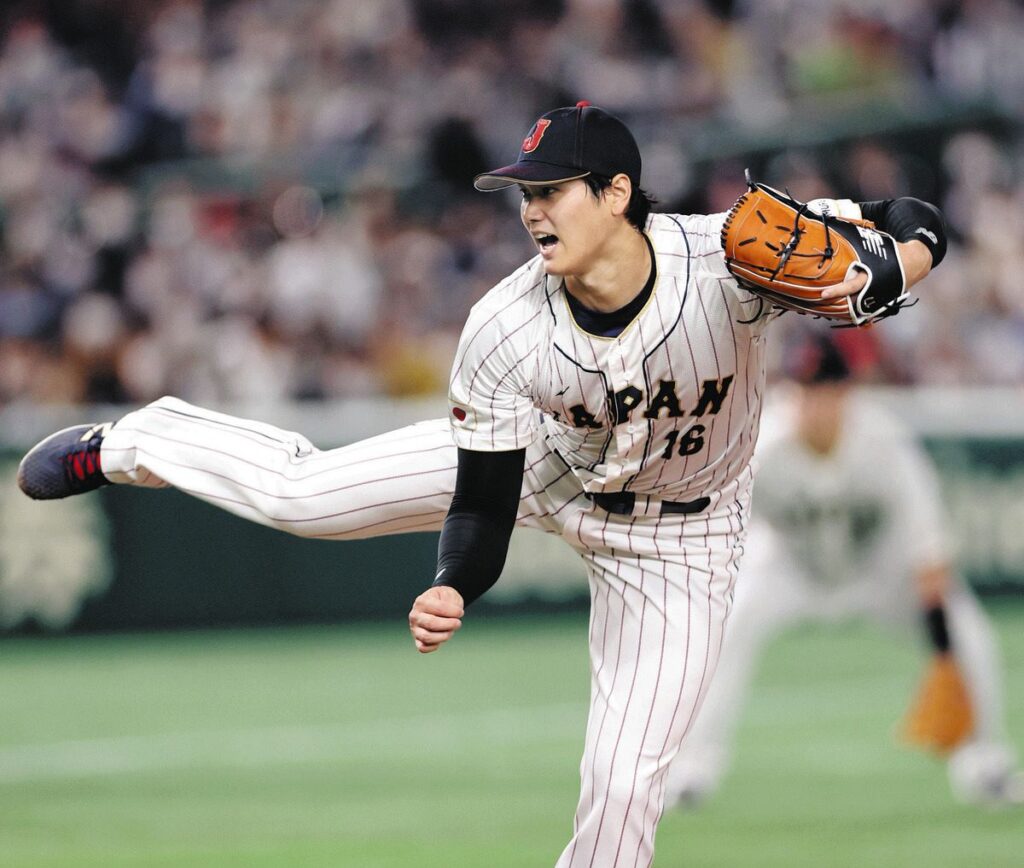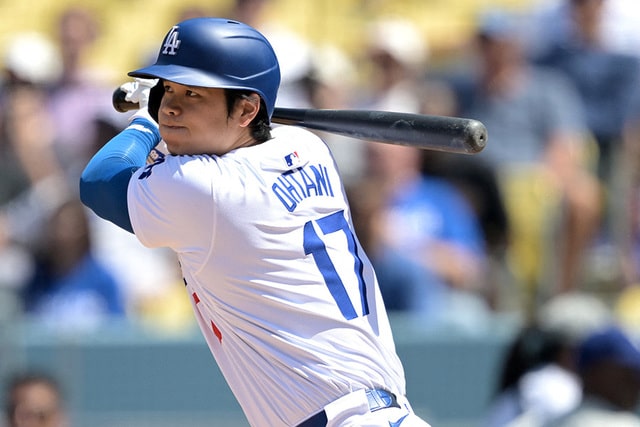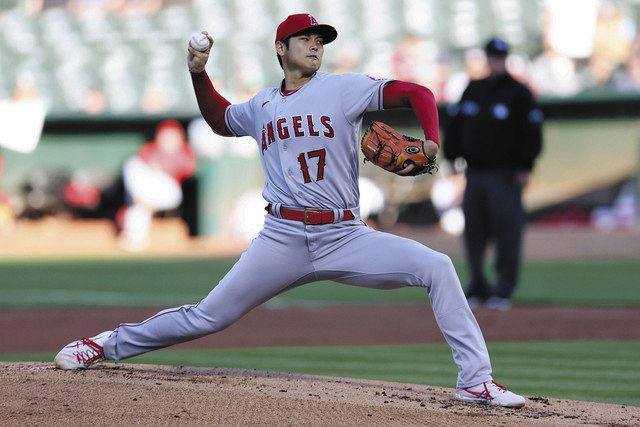
Shohei Ohtani is known for his incredible ball speed. His fastball reaches up to 165km/h, surprising many baseball fans and experts.
This overwhelming pitch speed is the result of Ohtani’s physical ability and training, and is a central element of his pitching style.
In this article, we will explain in detail the secret behind Shohei Ohtani’s 165 km/h ball speed, his training methods, and his performance in games.
We will also examine how this ball speed is generated and how it affects the game and the team as a whole.
We will also touch on Ohtani’s process of improving his ball speed, its risks, and his future outlook.
There are various factors behind Shohei Ohtani’s incredible ball speed.
Through this article, we hope to uncover his secrets and give you a deeper understanding of his playing style.
Now, let’s take a closer look at Shohei Ohtani’s ball speed of 165km/h.
目次
- 1 The secret of Shohei Ohtani’s ball speed of 165km/h
- 2 Historical significance of ball speed of 165 km/h
- 3 Impact of a 165 km/h fastball on the game
- 4 Shohei Ohtani’s process of improving ball speed
- 5 Challenges and risks of a ball speed of 165 km/h
- 6 Impact of Shohei Ohtani’s ball speed record on the baseball world
- 7 Future prospects: Shohei Ohtani and the limits of ball speed
The secret of Shohei Ohtani’s ball speed of 165km/h
Shohei Ohtani’s ball speed is supported by his amazing physical ability and meticulous training methods.
His fastball boasts an overwhelming speed of 165 km/h, and this is the core of his pitching.
Here, we will take a closer look at Ohtani’s physical abilities, training methods, and the mechanism that generates ball speed from a scientific perspective.
Shohei Otani’s physical ability and training method
Shohei Ohtani’s overwhelming ball speed is supported by his excellent physical ability.
He has a good physique with a height of 193 cm and a weight of 95 kg, which gives him great power in his pitching.
His muscle mass and flexibility are the foundation for his fastball throwing, especially his lower body strength.
Otani strives to maintain and further improve his strength and flexibility through daily training.
His training ranges from weight training to running and stretching.
In particular, weight training such as squats and deadlifts to strengthen his lower body strength is an important element that supports the power of his fastball.
His training also includes improving and maintaining his pitching form.
By maintaining proper form, you can maximize energy efficiency when pitching and increase pitch speed.
Otani constantly checks his pitching form and makes small adjustments with a professional coach.
In addition, he is also very careful about taking care of his body.
Through icing, massage, and recovery exercises after pitching, we minimize muscle fatigue and prepare you for your next pitch.
This comprehensive training and care are the foundation for his astonishing ball speed of 165km/h.
Scientific analysis: Mechanism that produces ball speed
The mechanism that produces Shohei Ohtani’s ball speed of 165km/h is scientifically very interesting.
First, there’s the efficient use of force and energy in his pitching motion.
When pitching, Ohtani makes full use of his lower body strength and efficiently transfers the reaction force from the ground to his upper body.
This transfers the force of your entire body to the ball, creating incredible speed.
The following elements are important in pitching mechanics:
- Stance and Balance : At the start of his pitch, Ohtani maintains a stable stance and balance, utilizing all of his body’s strength in unison.
- Trunk rotation : Trunk rotation plays an important role in the pitching motion. Ohtani generates even more speed by utilizing his strong core and transmitting upper body rotation to the ball.
- Arm Swing and Release Point : In Ohtani’s pitching, the arm swing is very fast and a precise release point is important to transfer maximum force to the ball. His arm swings are very flexible, which greatly contributes to his ball speed.
By combining these factors, Shohei Ohtani has achieved an astonishing ball speed of 165km/h.
His pitching motion is a perfect balance of physical force transfer and efficient energy utilization, which is the secret to his fastball.
Overall, Shohei Ohtani’s pitch speed of 165 km/h is the result of his excellent physical ability, meticulous training, and scientifically backed pitching mechanism.
His style of play set a new standard in the baseball world and will continue to captivate many fans.

Historical significance of ball speed of 165 km/h
Shohei Ohtani’s ball speed of 165km/h has great significance compared to historical records in Major League Baseball (MLB) and Nippon Professional Baseball (NPB).
Here, we will take a closer look at the baseball speed records in Major League Baseball and Nippon Professional Baseball and the meaning of Shohei Ohtani’s 165 km/h fastball.
Comparison with ball speed records in Major League Baseball
In Major League Baseball, Aroldis Chapman’s record for the fastest pitch is 105.8 mph (approximately 170.2 km).
Chapman’s record was achieved on September 24, 2010, against the San Diego Padres.
This speed was recorded by the pitch tracking system PITCH/fx and is widely recognized as the fastest pitch in MLB history.
Other notable fastball pitchers include Jordan Hicks. Hicks established himself as a fastball pitcher in MLB in 2018 with a 105.0 mph fastball.
Furthermore, Joel Zumaya also recorded a pitch of 104.8 mph (approximately 168.6 km) in 2006, which is also known as a very fast pitch.
Shohei Ohtani’s 165 km/h fastball is at a very high level compared to the fastest pitchers in the major leagues.
His fastball was comparable to that of other fastball pitchers in the major leagues, and his speed drew a lot of attention when he played in the major leagues.
Otani’s record in Nippon Professional Baseball
Currently, Shohei Ohtani is playing for the Dodgers, a major league baseball team, but Shohei Ohtani’s fastball is also attracting a lot of attention in Nippon Professional Baseball.
Otani is known as one of the fastest pitchers in the NPB, and his pitching speed has had a great influence on Japanese baseball fans and players.
In 2014, while playing for the Nippon-Ham Fighters, Ohtani recorded a fastball of 165km/h.
This speed is widely recognized as one of the fastest records in Japanese professional baseball.
His fastball has become a great inspiration for NPB pitchers, and many young pitchers are training to aim for his pitching style.
Otani’s fastball is the result of his physical ability and meticulous training, and his speed has become a hot topic both in Japan and abroad.
His fastball has set a new standard in NPB and is helping other pitchers improve their technique.
summary
Shohei Ohtani’s ball speed of 165km/h is at a very high level compared to historical records in Major League Baseball and Nippon Professional Baseball.
His fastball is comparable to MLB’s fastball pitchers and is widely recognized as one of the fastest in the NPB.
Otani’s fastball is the result of his physical ability and training, and his influence on the baseball world is immeasurable.
His pitching style will continue to be a goal for many pitchers.

Impact of a 165 km/h fastball on the game
Shohei Otani’s ball speed of 165km/h has a huge impact on the game.
His fastball increases the psychological pressure on batters and has a major impact on the team’s overall strategy.
Here, we’ll take a closer look at the specific impact a 165 km/h fastball has on a game.
psychological pressure on batters
Shohei Ohtani’s 165 km/h fastball puts intense psychological pressure on batters.
In order to respond to such fastballs, batters must react instantly, which requires a high level of skill and concentration.
Fear and pressure against fastballs can have a major impact on a batter’s psychology and can also affect their batting performance.
Specifically, for pitchers who throw fastballs, batters must adjust their batting form and timing to keep up with the fastball.
However, if things don’t go as planned, batters may feel anxious and anxious, leading to an increase in missed shots and strikeouts.
Due to the overwhelming speed of Ohtani’s fastball, he has the ability to put this kind of psychological pressure on batters.
Strategic impact on the entire team
Shohei Ohtani’s fastball has a huge impact on the team’s overall strategy.
First of all, in games where he pitches as a starting pitcher, the opposing team’s batters will need special preparation to deal with his fastballs.
As a result, countermeasures against Otani’s fastball will become an important topic of discussion during the opposing team’s batting practice and pre-game tactical meetings.
The Dodgers’ defense will also benefit from games in which Ohtani pitches as a pitcher.
Fastballs make it easier for batters to hit missed shots and ground balls, making it easier for defensemen to get outs.
This improves the overall rhythm of the game and improves the team’s defensive stability.
Furthermore, Ohtani’s fastball has the power to change the flow of a game.
When he pitches in a pinch or a critical situation, his fastball can completely change the flow of the game.
Especially when playing the role of a closer, he can use his fastball as a weapon to get strikeouts and close out games.
Otani’s fastball is a very powerful weapon for the team and is an important factor that determines the outcome of the game.
Overall, Shohei Ohtani’s 165 km/h fastball increases the psychological pressure on batters and has a major impact on the team’s overall strategy.
His fastball has the power to change the flow of a game and is an important factor contributing to the team’s victory.
I will continue to pay attention to how Otani’s fastball will affect the game.

Shohei Ohtani’s process of improving ball speed
Shohei Ohtani’s overwhelming ball speed of 165 km/h was not achieved overnight.
A rigorous training routine and thorough diet and nutrition have played a large role in his process of improving his ball speed.
Here, we take a closer look at Shohei Ohtani’s training routine, its effects, and the importance of diet and nutrition.
His training routine and its effects
Shohei Ohtani’s training routine is designed to maximize his physical abilities.
His training primarily focuses on building muscle strength, improving flexibility, and optimizing his pitching form.
First, training to strengthen muscle strength focuses on weightlifting and resistance training.
Otani places particular emphasis on strengthening lower body strength, incorporating exercises such as squats and deadlifts.
This allows the force obtained from the ground when pitching to be efficiently transmitted to the upper body, contributing to improved pitch speed.
To improve flexibility, I incorporate stretching and yoga.
Flexible muscles and joints allow for smooth pitching motion and reduce the risk of injury.
In particular, maintaining flexibility in your shoulders and elbows is very important for throwing fastballs.
Furthermore, optimizing pitching form is also a big factor.
Otani works with a professional pitching coach to closely analyze his own form and pursue efficient movements.
Using video analysis and motion capture technology, we scientifically analyze pitching movements and find areas for improvement.
This allows maximum power to be transmitted to the ball with minimal energy loss.
As a result of these training routines, Shohei Ohtani has achieved an incredible ball speed of 165 km/h.
The results of his training have greatly contributed not only to the improvement of his physical abilities, but also to the efficiency and stability of his pitching.
Importance of diet and nutritional management
Diet and nutritional management are also essential factors in improving Shohei Ohtani’s ball speed.
His diet emphasizes balanced nutrition to support the body’s recovery and muscle growth.
First, protein is an essential nutrient for muscle repair and growth.
Otani actively consumes high-protein foods such as meat, fish, eggs, and legumes.
I also incorporate protein shakes and recovery drinks after training to efficiently replenish protein.
Carbohydrates are also an important source of energy.
Ohtani eats a balanced diet of carbohydrates such as rice, pasta, and bread to store energy before matches and training.
This maintains your endurance and gives you the energy to complete high-intensity training.
Additionally, vitamins and minerals are also important. Eating plenty of vegetables and fruits will boost your immune system and help you recover from fatigue.
Hydration is also essential. Drinking plenty of water maintains the water balance in your body and keeps your muscles functioning optimally.
Ohtani’s diet and nutritional management play an important role in maximizing his performance.
His diet is planned in collaboration with a nutritionist and optimized for his daily training and matches.
This keeps his body in tip-top condition and creates the foundation for him to throw a 100 mph fastball.
Overall, Shohei Ohtani’s process of increasing his pitch speed requires a rigorous training routine and thorough diet and nutritional management.
His hard work and scientific approach have allowed him to achieve incredible ball speeds and solidify his place in the baseball world.

Challenges and risks of a ball speed of 165 km/h
Shohei Ohtani’s 165 km/h fastball attracts many fans with its power and charm, but it also comes with some challenges and risks.
Here, we take a closer look at the injury risks posed by a 100 mph fastball, what you can do about it, and how it will affect your long-term career.
Injury risks and countermeasures
The astonishing ball speed of 165km/h puts a huge strain on the pitcher’s body.
In particular, the stress placed on the shoulder and elbow joints is immense, which increases the risk of injury.
Throwing a fastball requires an extremely high level of muscle strength and flexibility, but it also tends to put excessive strain on the joints and muscles.
First, shoulder injuries include rotator cuff injuries and subacromial bursitis.
These injuries are often caused by repetitive pitching motions and are especially at risk for pitchers who throw fastballs.
Regarding the elbow, injuries to the medial collateral ligament (UCL) are common, and this often requires Tommy John surgery.
To prevent these injuries, Shohei Otani takes thorough care of his body.
First, icing and stretching after pitching is essential to promote muscle and joint recovery.
Recovery drinks and nutritional supplements are also important, especially foods containing protein and anti-inflammatory ingredients.
Furthermore, regular physical checks and rehabilitation are also important.
Otani works closely with the team’s medical staff and regularly checks the condition of his shoulder and elbow.
If an abnormality is found, taking appropriate measures immediately can prevent injuries before they become serious.
Long-term career impact
Maintaining a 165 km/h fastball requires constant training and physical care, but how this will affect his long-term career is also an important issue.
Maintaining a high ball speed places a heavy burden on the body, so there is a risk of shortening the player’s lifespan.
In particular, constantly throwing fastballs can cause permanent damage to the shoulders and elbows over the long term.
For this reason, Shohei Ohtani carefully manages the number of pitches he pitches and the intervals between pitches and takes steps to minimize the strain on his body.
For example, during pitching practice, you may want to practice lowering your pitch speed, throwing more breaking balls, and adjusting the frequency of fastball use.
It is also important to regularly review your training program and flexibly change it according to your physical condition.
The off-season requires training focused on recovery and recovery to get in shape for the next season.
Furthermore, mental health care is also an important factor in a long-term career.
The pressure of maintaining high ball speeds and anxiety about the risk of injury can affect mental health.
Otani also works with a sports psychologist and receives mental support.
This ensures that it is always in a state where it can perform at its best.
All in all, throwing a 100 mph fastball comes with great appeal and significant risk.
Thorough physical care, training, and mental support are essential to minimizing the risk of injury and maintaining a long-term career.
Shohei Ohtani’s efforts have important implications for other players, and we look forward to his continued success and health.

Impact of Shohei Ohtani’s ball speed record on the baseball world
Shohei Ohtani’s ball speed record of 165km/h has had a huge impact on the entire baseball world.
This influence is particularly evident in the inspiration for young players and the evolution of coaching and training.
Here we will take a closer look at each aspect.
Inspiration for young players
Shohei Otani’s overwhelming ball speed record has become a great inspiration for many young players who aspire to play baseball.
It is emphasized that his success is not just a result of physical ability, but also hard work and scientific training.
This has given young players hope that they too can throw fastballs like Ohtani if they put in the effort.
Otani’s 165 km/h fastball has had a strong influence, especially in the Japanese high school baseball world.
Many high school pitchers train with him and hone their fastballs.
His pitching form and training methods are widely studied and imitated to help young players improve their techniques.
Additionally, Ohtani’s success has shown the potential of two-way players in baseball, with more players pursuing both pitching and batting.
Additionally, Otani’s success has had a major impact internationally.
Young players in American youth baseball and other countries are now following him as a role model and setting higher goals.
The new standard that Ohtani set for the baseball world has become a new goal for young players, increasing their motivation.
The evolution of coaching and training
Shohei Ohtani’s ball speed record also had a major impact on coaching and training methodologies.
His success highlights the importance of training based on a scientific approach and data analysis.
This has led to significant advances in coaching and training methods.
First, Ohtani’s training method includes not only weight training and practice using a pitching machine, but also technical improvements using video analysis and motion capture.
This made it possible to scientifically analyze and optimize his pitching form and force transmission method.
Many coaches refer to Otani’s training methods and incorporate them into their own instruction.
Our training facilities and programs are also evolving.
Thanks to Otani’s influence, many training facilities have adopted the latest technology, making coaching their athletes more scientific and effective.
In particular, training equipment has been developed to improve force transmission and balance during pitching, and many athletes are using it.
Additionally, the importance of recovery and nutritional management is emphasized.
Ohtani follows a thorough recovery protocol to maintain his fastball, which serves as an example for other players and coaches.
His recovery process includes icing, stretching and taking a special recovery drink to minimize the risk of injury.
Overall, Shohei Ohtani’s ball speed record serves as a strong inspiration for young players and greatly contributes to the evolution of coaching and training.
His success set a new standard for baseball and serves as a role model for many players and coaches. His influence will continue and he will continue to contribute to the development of the baseball world as a whole.

Future prospects: Shohei Ohtani and the limits of ball speed
Shohei Ohtani still boasts an astonishing ball speed of 165km/h, but it is an interesting topic to consider the possibility of him breaking that limit even further in the future.
Let’s take a closer look at his potential to further improve his ball speed and his future challenges.
Possibility of further improving ball speed
Shohei Ohtani’s ball speed of 165km/h is already an impressive record, but there is potential for further improvement.
If he makes full use of his physical ability and scientific training methods, he may be able to further improve his ball speed.
First, on the technical side, the key is to fine-tune pitching form and improve the efficiency of power transmission.
Ohtani already does this at a high level, but advances in sports biomechanics allow for even more detailed analysis and improvement.
By using the latest motion capture technology and simulation software to pursue the optimal pitching form, it is possible to minimize power loss and further improve pitch speed.
A balance between strength training and flexibility training is also important.
Not only training to improve muscle strength, but also training such as stretching and yoga to maintain flexibility of joints and muscles can optimize body movement and improve ball speed. is.
In particular, maintaining flexibility in your shoulders and elbows is essential for throwing fastballs.
Furthermore, advances in recovery technology will also play a major role.
By recovering quickly and effectively after pitching, you can minimize muscle fatigue and maintain your best condition for your next pitch.
By incorporating the latest recovery equipment and nutritional supplementation methods, Ohtani is able to stay in top condition and has more room to improve his pitching speed.
Shohei Otani’s future challenges
Shohei Ohtani’s future challenges include not only further improving his pitch speed, but also expanding his influence on the baseball world as a whole.
His style of play and success are an inspiration to many players, and he will continue to strive for new goals himself.
First, there is the improvement in performance as a two-way player.
Otani has achieved top-level results as both a pitcher and a batter, but he is aiming to improve even further.
As a pitcher, my goal is to record a ball speed of over 165km/h and accumulate more wins.
Additionally, as a batter, I am continuing to further refine my batting techniques with the aim of improving my batting average and number of home runs.
Additionally, it is also important for him to use his influence to contribute to the baseball world as a whole.
Otani is actively involved in coaching and developing young players, playing a role in nurturing the next generation of star players.
By sharing his experience and knowledge, more players will be able to play at a high level.
Shohei Ohtani’s future challenges have important implications not only for his own career, but also for the baseball world as a whole.
His further improvement in ball speed and performance will give hope to many fans and players, and will be the power to open up the future of baseball.
Overall, Shohei Otani’s future prospects are very bright, and his challenges will continue.
I would like to continue to watch his evolution, paying attention to his potential for further improvement in ball speed and his future challenges.



